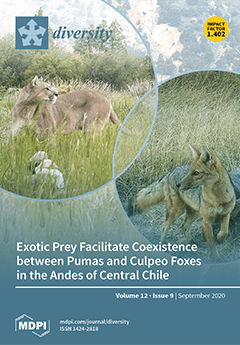Up to now, the taxonomic conflict of the Apocynaceae family has attracted the attention of scientists and researchers worldwide. Recently, this family was divided into five subfamilies. The present study aims to investigate the implication of interlacing macro-, micro-morphological, anatomical, and chemical characteristics
[...] Read more.
Up to now, the taxonomic conflict of the Apocynaceae family has attracted the attention of scientists and researchers worldwide. Recently, this family was divided into five subfamilies. The present study aims to investigate the implication of interlacing macro-, micro-morphological, anatomical, and chemical characteristics of the leaves of eight Apocynaceae plants (
Adenium obesum,
Dipladenia boliviensis,
Carissacarandas,
Nerium oleander,
Asclepias curassavica,
Calotropisprocera,
Acokanthera oblongifolia, and
Thevetia neriifolia), and to provide valuable taxonomic differentiation of these species. The macro-morphological investigation includes shape, apex, base, and venation of leaves, while the micro-morphological study includes leaf epidermal cells, stomata, and trichomes. The anatomical features of the leaf blade were studied by scanning electron microscope (SEM). Additionally, the chemical composition of the silylated methanolic extract was analyzed by Gas chromatography–mass spectroscopy (GC-MS). Sixty-three compounds were characterized from the silylated extracts of the eight plants, where quinic acid, sucrose,
D-pinitol, and
D-(−)-fructopyranose were determined as major compounds. The Principal Component Analysis (PCA) based on the chemical composition revealed a significant chemical correlation among all species with the presence of sugars and amino acids, as well as phenolic acids and iridoid glycosides. The cluster analysis, based on all merged characters, showed that the eight species can be categorized into three clusters. The first cluster comprises
A.obesum, A. curassavica, and
T. neriifolia, while the second cluster contains
D. boliviensis,
N. oleander,
A. oblongifolia, and
C. carandas, and the third cluster consists of
C. procera alone. This cluster revealed some similarities to the recent classification of Apocynaceae, while it showed inconsistency regarding
A.obesum,
C. procera, and
N. oleander. Due to the obtained inconsistent data and observed variation among the studied species, further study is recommended for more characterization of these species, based on additional parameters, including molecular characteristics, particularly
A.obesum,
C. procera, and
N. oleander.
Full article





